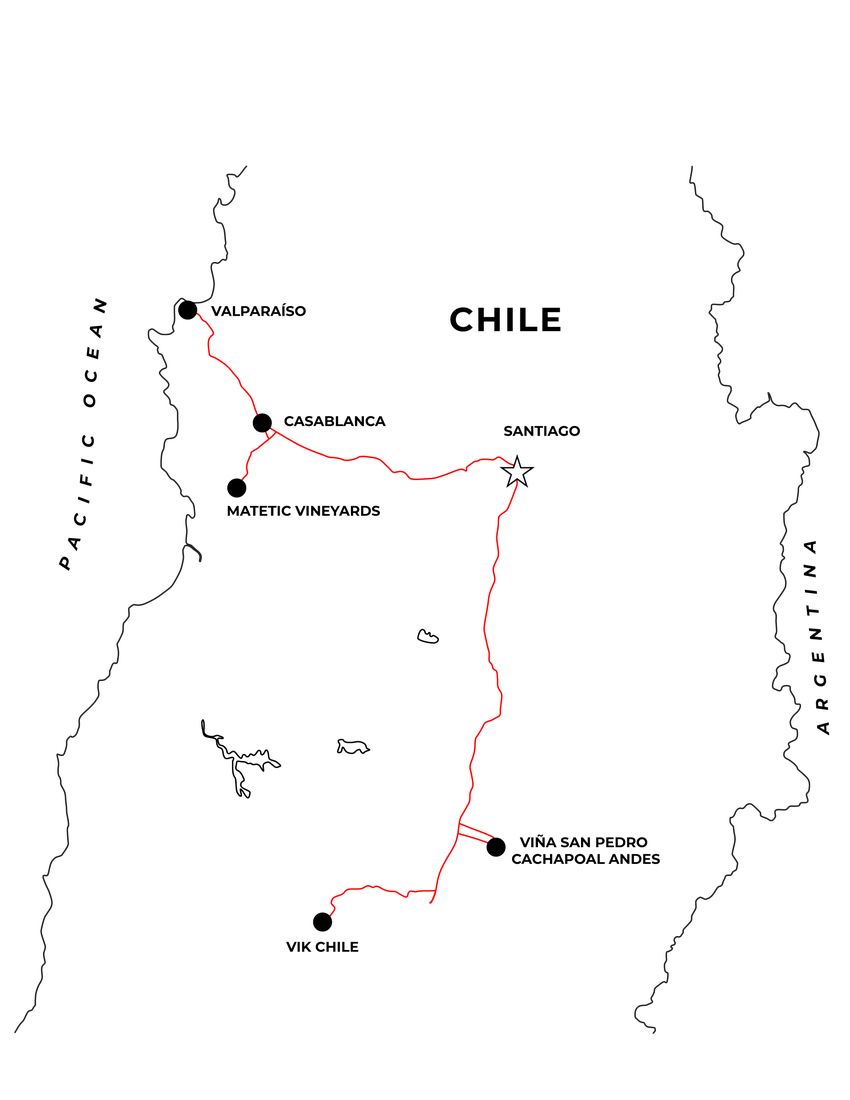It took just three days of drinking my way across Chile’s majestic Andes Mountains and foggy coastal plains to fall for the ingenuity and verve of the country’s winemakers. Nowhere do traditional techniques—Chile has been producing wine since the 16th century—take place at such a dynamic crossroads of ocean, mountain, desert, and glacier. While the Finger Lakes, in New York, and Sonoma, Northern California’s alt-Napa, get more attention as the emerging wine-world capitals, discerning drinkers worship Chile. Not only for its Merlots, Cabernets, and even Chardonnays that stand up to the best California has to offer, but also because of its widespread commitment to sustainability. A majority of its winemakers have adopted an ambitious code, with standards around planting vineyards, energy consumption, and labor safety, in the hopes that by 2025 Chile will be the world’s largest producer of sustainable wines.
Prior to this trip my exposure to Chilean wine had been limited to budget-friendly options—decent Cabernets like Gato Negro. To dig into the terroir and see the pioneering practices firsthand, I needed to drive through the land. So I headed down to Chile with three fellow oenophiles for a wine adventure to take in the spectacular natural beauty, the rich culinary tradition, and the charming country villas.

A road trip through Chile’s wine country in the area surrounding Santiago
Mark Nerys
Chile’s wine regions are vast, but you can get a good snapshot by exploring the areas just north and south of the capital, between Valparaíso and the Millahue Valley. We started in the Casablanca Valley, 50 miles northwest of Santiago. It’s sandwiched between the rocky Pacific coast and the Andes, where cool maritime winds and sandy clay soils yield crisp whites and sparkling wines. Seeking bubbles, we visited Casa Valle Viñamar, an old-school country villa. After a bike tour we sat down for steak asado and white-fish ceviche, served picnic-style on the front patio. Our lunch views were of never-ending vineyards and a pool-size fountain that beckoned us to take a dip. Post-picnic we had a side-by-side tasting of Viñamar’s house sparkling and one from Leyda Winery, which sits just two and a half miles from the ocean in the newly designated Leyda Valley subregion. The latter had a distinct salinity and crispness.

